The US Army has announced the selection of Sig Sauer as the winner of the Next Generation Squad Weapon System (NGSW) trial. The choice was made after 27 months of testing and evaluation, including feedback from over 1,000 Soldiers, Special Operations Forces (SOF), and Marine personnel. Sig's NGSW, the MCX-Spear, and SIG-LMG will initially replace the M4 carbine and M249 Squad Automatic Weapon families predominantly in infantry and SOF formations.
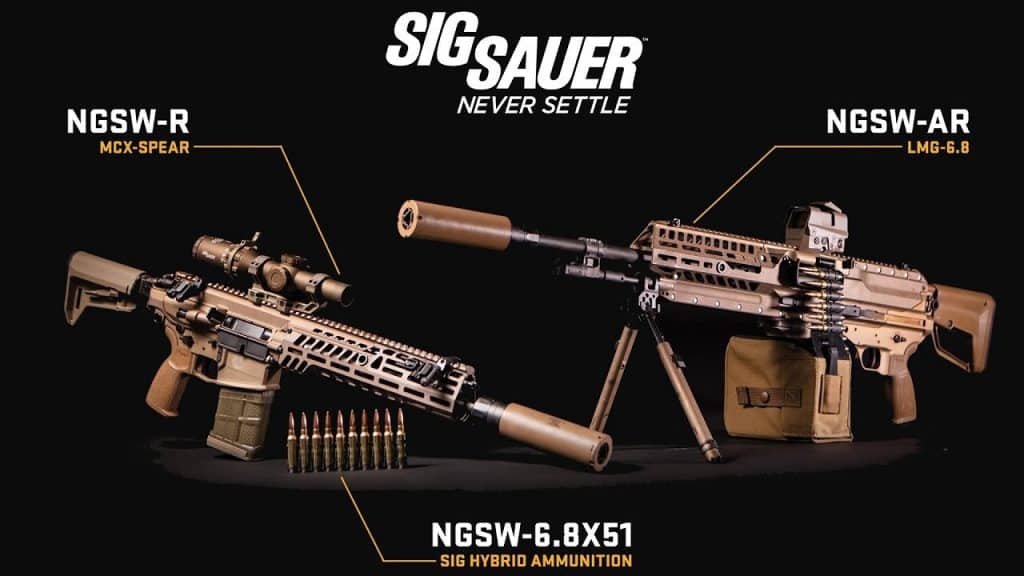
This is a Very Big Deal, not just for Sig but for the United States military. NGSW changes individual weapon and squad machine gun platforms and a complete change in caliber, cartridge, and optic. It is the first time in 65 years the Army has made such an extensive transition.
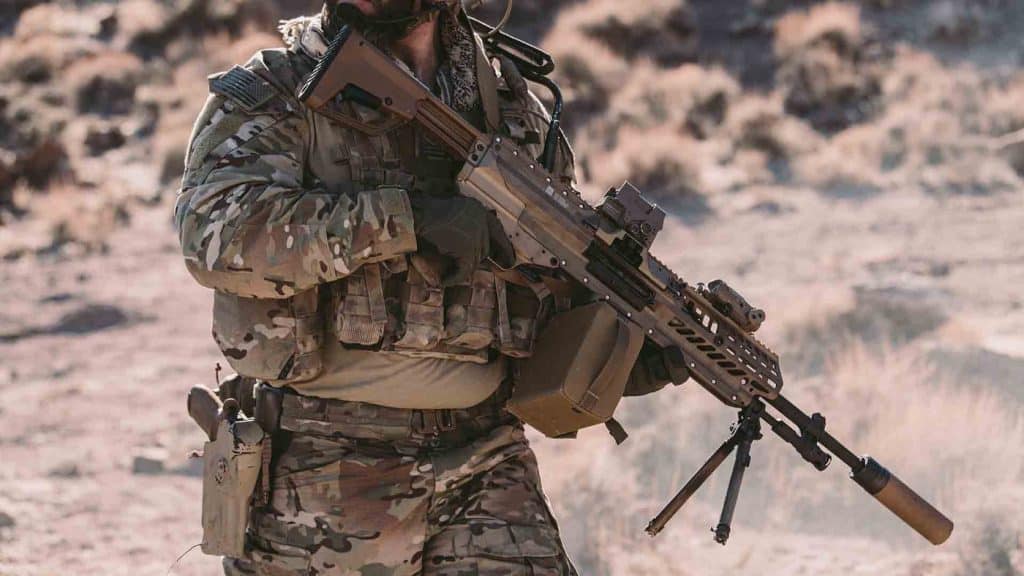
Ron Cohen, Sig Sauer President, and CEO acknowledged this, saying,
“I think the Army's Next-Gen program is the most audacious effort in decades. It is the ability to participate in writing history. And whatever happens now will dictate the next 30, 40, 50 years.”
He's right. The original weapons NGSW is intended to replace, the heirs and assigns of the M16/AR15 platform, have been working the sharp end for more than half a century and likely will continue to do so for decades to come.
As-yet-unspecified Army units will be issued the first NGSW replacements by the end of the fiscal year 2023. We should be seeing them on the range or deployed on a large scale within the next 18 months.
XM in 6.8
The official starting nomenclature will be XM5 (MCX-Spear), a rifle to replace the M4A1 (and CQBR, etc.), and XM250 (SIG-LMG). The NGSW XM250 LMG — say that five times fast — is a light machine gun slated to replace the M249 Squad Assault Weapon (SAW). Both are chambered in 6.8 x 51mm, formally a part of the 6.8 Common Cartridge Family of Ammunition. Sig will be manufacturing the ammunition as well. The X will be dropped from their designator once the weapons are out of the testing and transition phase.
The initial phase of the contract is valued at over $20 million. In coming years, that will total several billion (with a b) of dollars in revenue: an estimated $4.7 billion for the rifles and LMGs and another $2.7 billion for advanced individual weapon optics.
Why the change? Many reasons are tied to the obvious considerations: range, lethality, reliability, accuracy, weight, etc. In addition, much of the Army's requirements were informed by such studies as the Naval Postgraduate School's Effectiveness of the Individual Riflemen in an Infantry Squad (q.v.), the Analysis on the Next Generation Assault Rifles and Ammunition Designed for the US Army (National Military University, Bulgaria), and likely such earlier studies as Maj. Ehrhart's Increasing Small Arms Lethality in Afghanistan: Taking Back the Infantry Half-Kilometer monograph for the School of Advanced Military Studies at the US Army Command and General Staff College.
One salient requirement was an ability to defeat peer- and near-peer body armor. Two years ago, Army Chief of Staff Gen. Mark Milley, speaking at a National Defense Industrial Association meeting, reportedly told attendees the cartridge would defeat any extant body armor and any body armor projected to appear in the future.
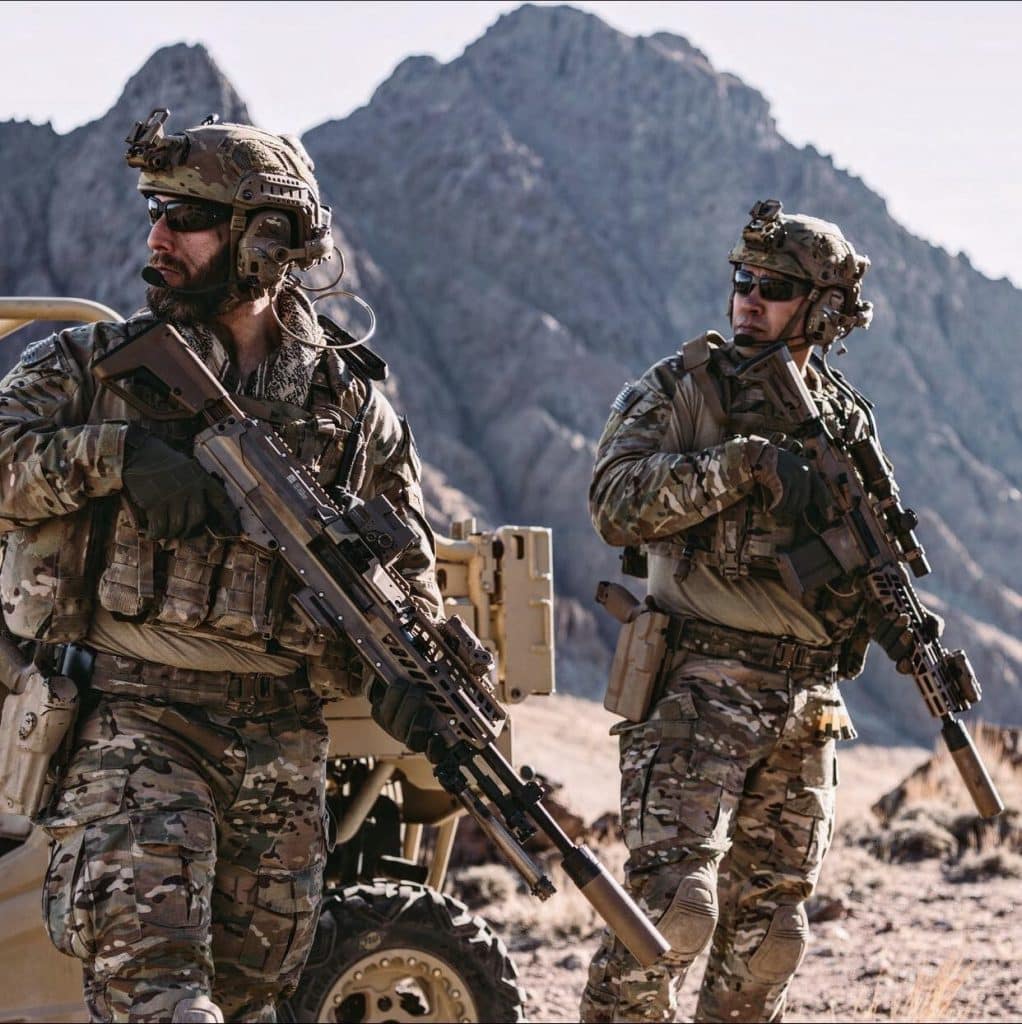
An Army news release addresses the selection of 6.8 x 51mm in part by explaining:
“Both weapons provide significant capability improvements in accuracy, range and overall lethality. They are lightweight, fire more lethal ammunition, mitigate recoil, provide improved barrel performance, and include integrated muzzle sound and flash reduction. Both weapons fire common 6.8-millimeter ammunition utilizing government-provided projectiles and vendor-designed cartridges. The new ammunition includes multiple types of tactical and training rounds that increase accuracy and are more lethal against emerging threats than both the 5.56mm and 7.62mm ammunition.”
Brig. Gen. Larry Q. Burris, Jr., the US Army's Chief of Infantry, told the Army Times,
“The weapon is designed and aimed at close combat forces. That includes infantrymen but also cavalry scouts, combat engineers, forward observers, and combat medics.”
Those and other combat arms billets (like their SOF counterparts) are part of the “tooth” end of what John McGrath (The Other End of the Spear) would call the Army's tooth-to-tail ratio.
Those soldiers are referred to as the Close Combat Force or CCF.
He indicated no current plans to issue Next Generation Squad Weapon (NGSW) to soldiers not assigned to direct combat units, advising that such personnel would continue using the M4A1 and M249 options. The retention of these weapons, all chambered in 5.56mm, means the DoD's commitment to maintaining cross-national functionality with NATO militaries will remain intact.

General Burris also serves as the Director of Soldier Lethality, a part of the recently established US Army Futures Command.
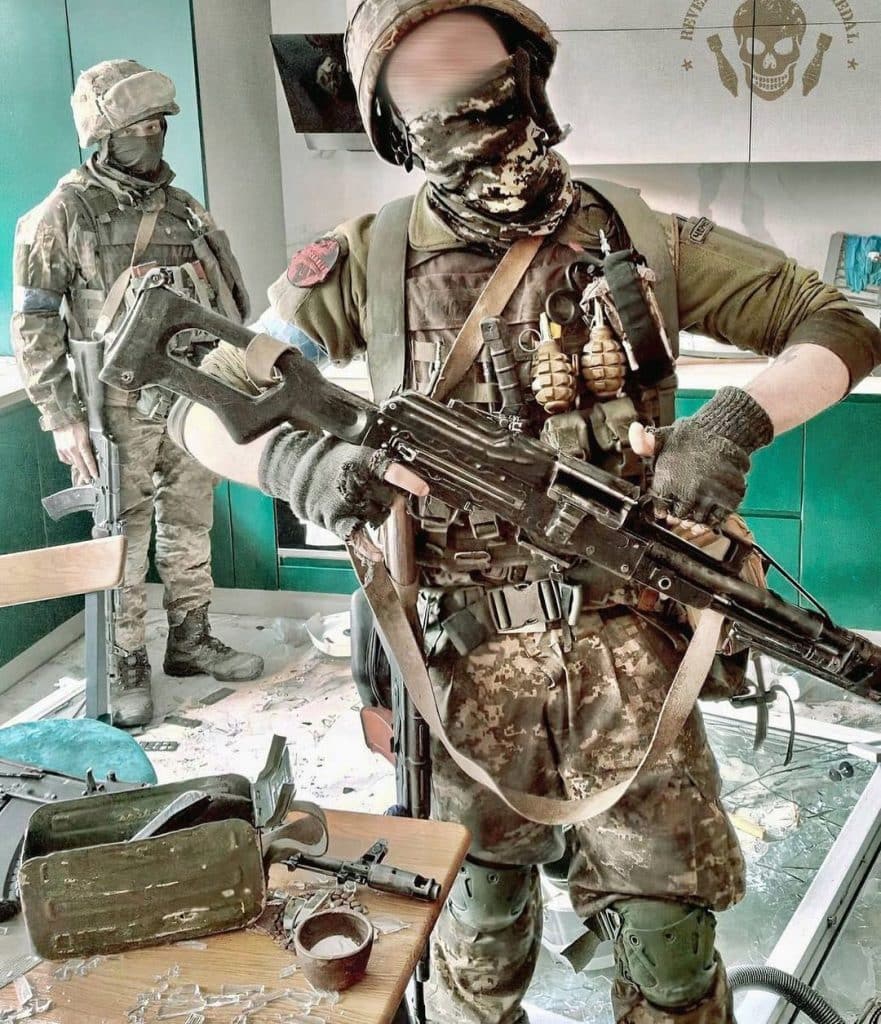
NSGW-Rifle: XM5/MCX 6.8 SPEAR
The weapon we'll eventually know as the M5 begins life as the MCX-SPEAR. The MCX-SPEAR weighs just under eight and a half pounds, making it roughly a pound heavier than the M4, with ambidextrous controls and a 13 in. barrel. The XM5 will utilize the XM157 Fire Control system like its bigger brother. In addition, the NGSW-FC is a variable magnification optic with several high-tech features, including a laser rangefinder, ballistic calculator, visible and IR lasers, Intra-Soldier Wireless, etc. The rifle was intentionally designed to be as close to legacy systems as possible, with well-considered advantages (such as the ability to cycle the weapon with the stock folded).
Personnel already familiar with the M4 or AR15 should be able to make the switch easily.
The optic is slated to replace the (Aimpoint) Close Combat Optic, (Trijicon) Rifle Combat Optic, and (Elcan) Machine Gun Optic with a single mechanism. It is manufactured by Sheltered Wings, a subsidiary of Vortex Optics.

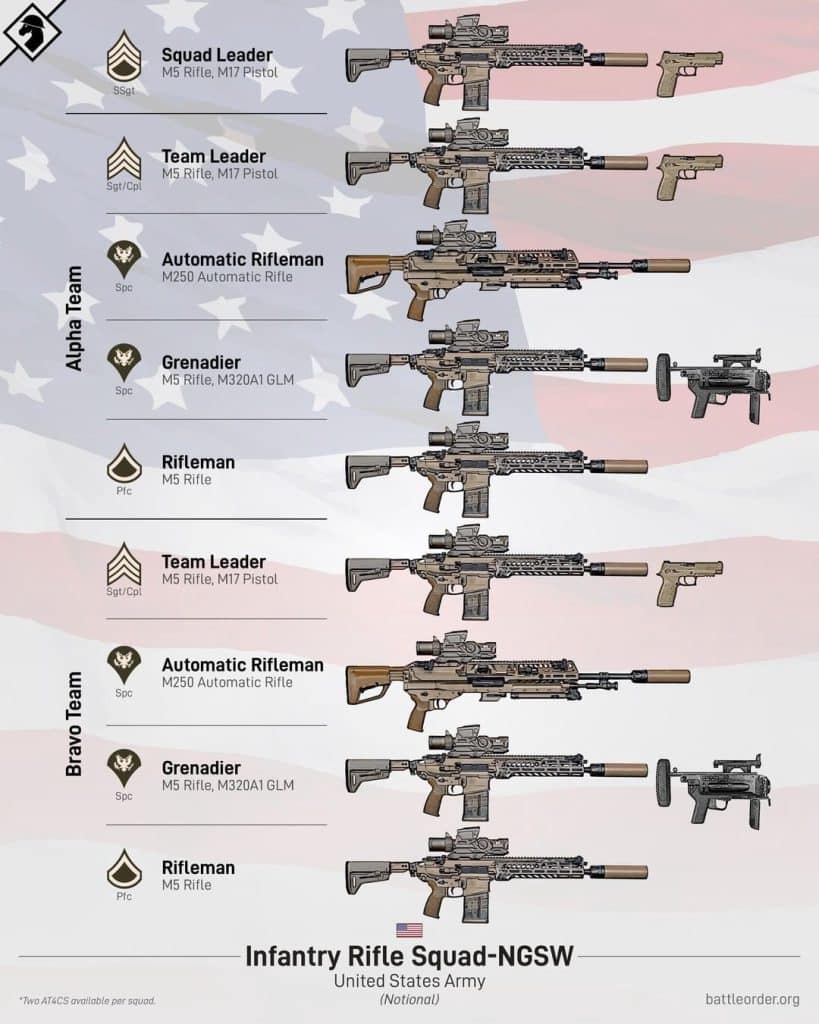
NGSW-AR [Automatic Rifle]
The eventual M250 is a belt-fed light machine gun version of the NSGW-R. Depending on its configuration, it weighs approximately twelve pounds, i.e., attached “furniture” such as optics, visible/IR laser system, and the like. Initial estimates indicate the Army will eventually be buying some 13,000 of the weapon systems. Like its smaller brother, the M250 is intended to be suppressed with the SIG SLX as a standard-issue item.
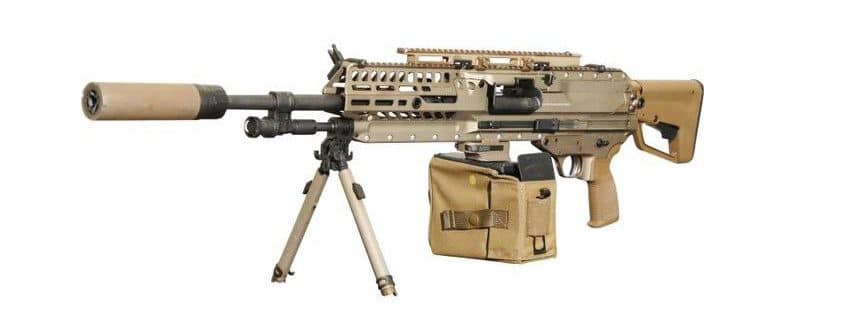
From Sig's release:
The SIG-LMG lightweight belt-fed machine gun and SIG MCX-SPEAR Rifle are purpose-built to harness the energy of the SIG FURY 6.8 Common Cartridge Ammunition enabling greater range and increased lethality while reducing the soldier's load on the battlefield. Additionally, the SIG-LMG and MCX-SPEAR deliver powerful weapon and technology advancements to the soldier and provide a solution for battlefield overmatch compared to the current M249 and M4/M4A1.
The US Army's procurement of the NGSW System marks the beginning of an era where combat weapons are coupled with a suppressor as standard issue equipment. The SIG SLX Suppressors are designed to reduce harmful gas backflow, sound signature, and flash. SIG SLX Suppressors feature a patented quick-detach design for easy installation and removal.
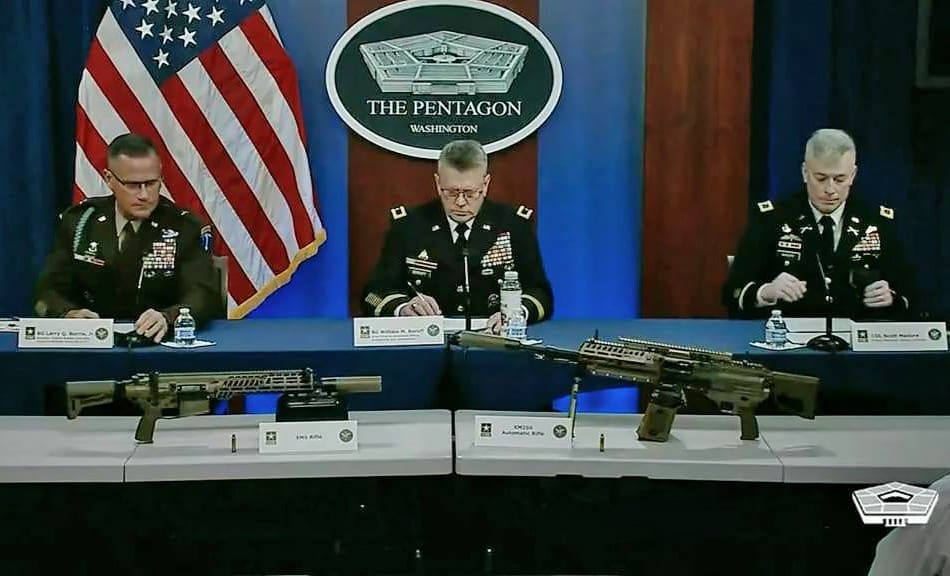
NGSW Original Competitors
Initial contenders for the NGSW rifle/automatic rifle contract included SIG Sauer, Textron Systems, and General Dynamics. The latter's proposal was a bullpup design. Fire control competitors were Vortex Optics and L3 Harris. (Image courtesy US Army Acquisition Support Center)
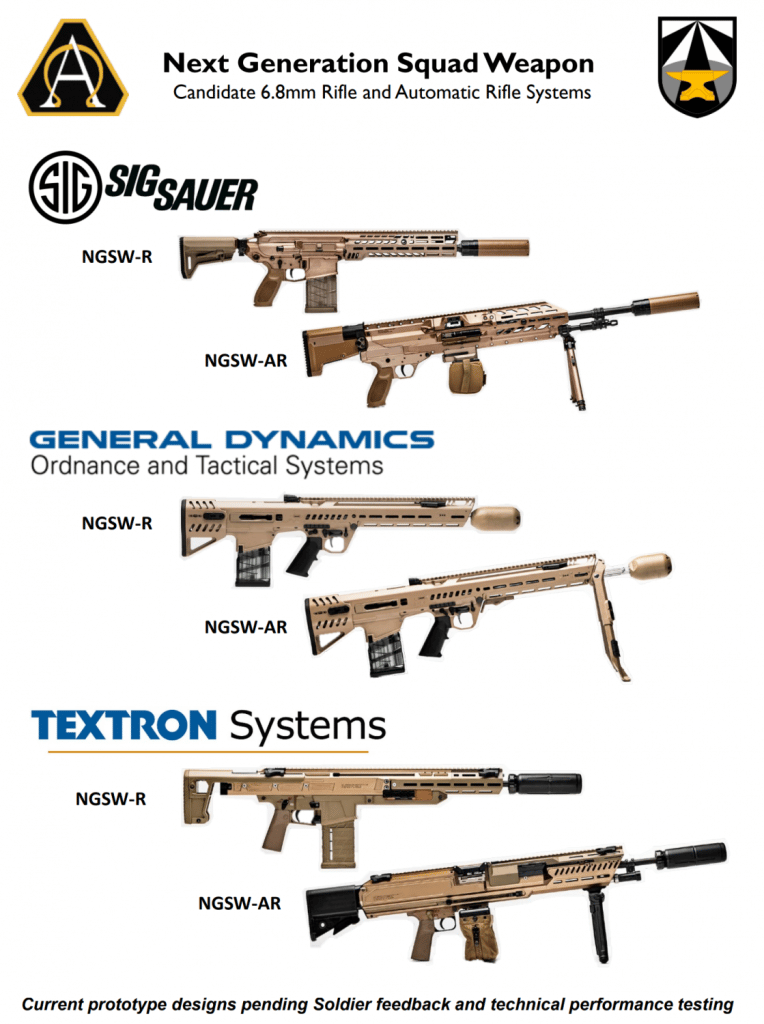

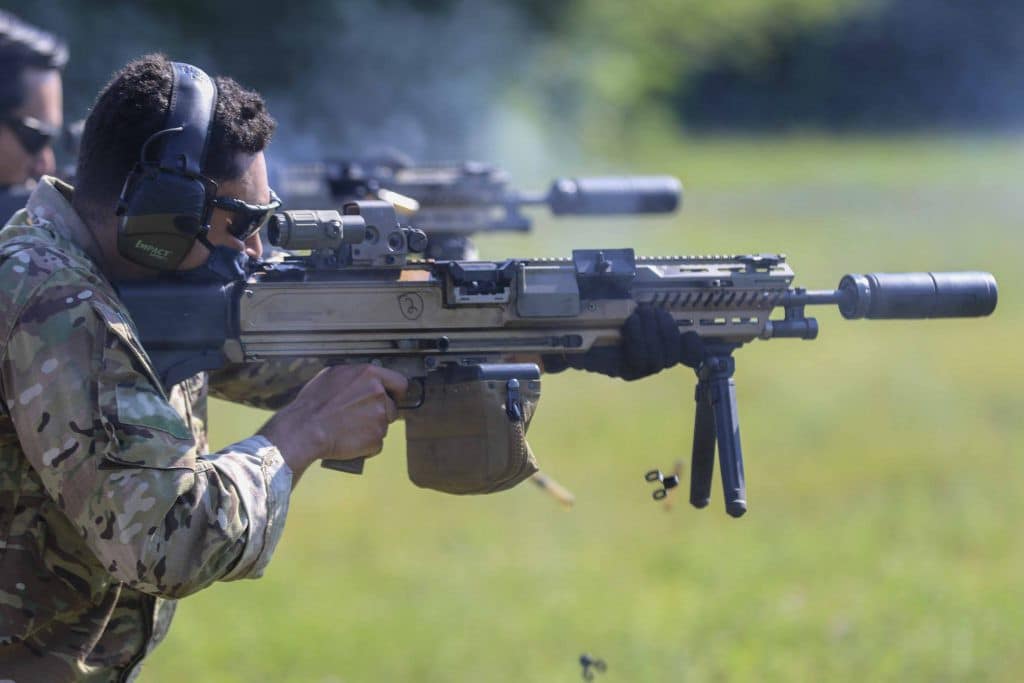
“SIG President & CEO Ron Cohen has been working toward this for longer than many realize. In a conversation at SHOT Show three years ago, he told me that one goal he set for the company was to produce a “superior cartridge and weapon system” to make our soldiers even more lethal. Three years ago, it didn't seem very realistic to think that the Army -with a reputation for making armament changes at a speed slightly smaller than glaciers- would embrace the idea of a “new” cartridge, especially one that got “more out of less” (material-wise). Yet the 6.8×51 FURY Hybrid will be coming online, bringing with it increased lethality.” ~ Jim Shepherd, thetacticalwire.com.
Further information can be sourced via PEO Soldier online at Army.mil.

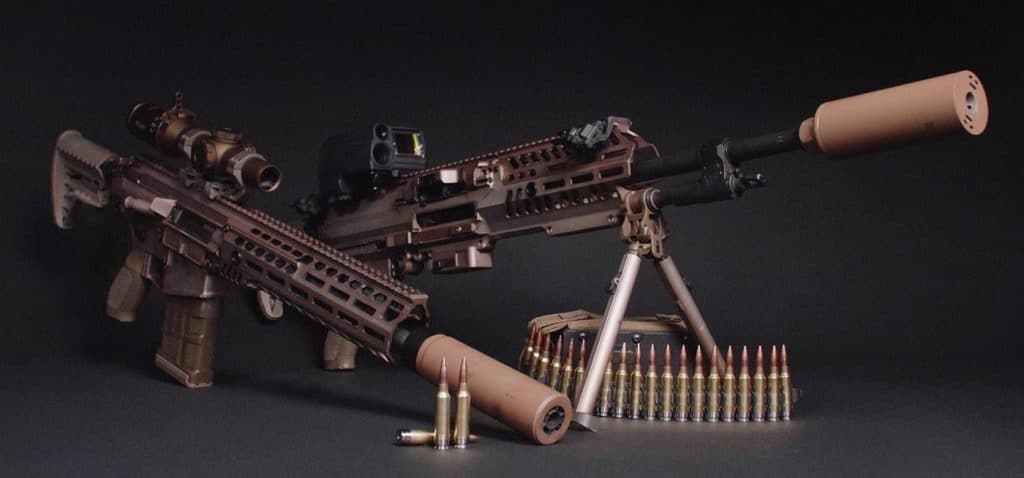
NSGW Program Background (Appendix I)
The following is how the United States Army Acquisition Support Center described the Next Generation Squad Weapons program early on.
Next Generation Squad Weapons (NGSW) Program
The Next Generation Squad Weapons (NGSW) Program is an iterative, prototyping effort using Middle Tier Acquisition Authority to develop operationally relevant, squad-level lethality to combat proliferating threats, informed by soldier's feedback.
The NGSW prototyping effort consists of the Rifle (NGSW-R) and Automatic Rifle (NGSW-AR) with a typical 6.8mm cartridge and Fire Control (NGSW-FC) between the two systems. The effort aims to field the Close Combat Force (CCF) with the NGSW-R as the planned replacement for the M4A1 and the NGSW-AR as the planned replacement for the M249 Squad Automatic Weapon.

The program is currently in a competitive prototyping iteration with three vendors for weapons and ammunition (SIG Sauer, General Dynamics — OTS, and Textron Systems) and two vendors for fire control (Vortex Optics and L3Harris). The first prototype test, beginning in 3QFY20, will serve as a “diagnostic test” to inform the weapon and ammunition vendors of their current performance and feed another design iteration. The second prototype test, beginning in 2QFY21, will report selection teams on the performance of these systems.
BENEFIT TO THE SOLDIER
The NGSW program significantly increases lethality and probability of hit at the squad level. Due to the nature of the General Purpose ammunition, the 6.8mm projectile will outperform even the most modern 5.56mm and 7.62mm ammunition. These weapon systems will give Soldiers significant capability improvements in accuracy, range, signature management, and lethality.
SPECIFICATIONS
Though the specifics are competition sensitive, the NGSW-R, NGSW-AR, NGSW-FC, and the 6.8mm ammunition will be compatible with all the currently fielded enablers while providing an open Adaptive Soldier Architecture (ASA) to integrate with developing enabler programs.
PROGRAM STATUS
Three weapon and ammunition vendors and two fire control vendors are competing through FY21 in two separate prototyping efforts, with the option to produce and field based on system performance.
PROJECTED ACTIVITIES
FY20: Prototype Test #1 (Diagnostic)
FY21: Prototypes Test #2 (Record) onward selections and production decision
FY22: First Unit Equipped
Read the original article in its entirety at medium.com.



Love 2 rent 1 to shoot in TX & Vegas
Will most likely make 556 ammo more difficult to obtain for US second amendment supporters and higher $$$/ round.